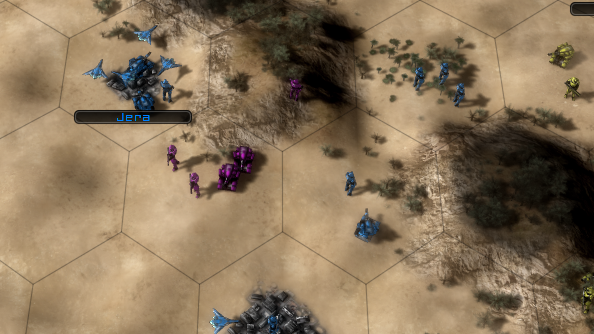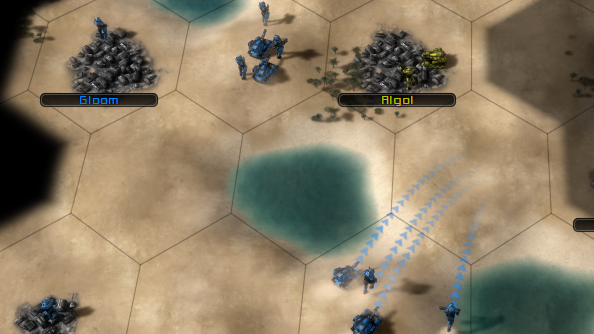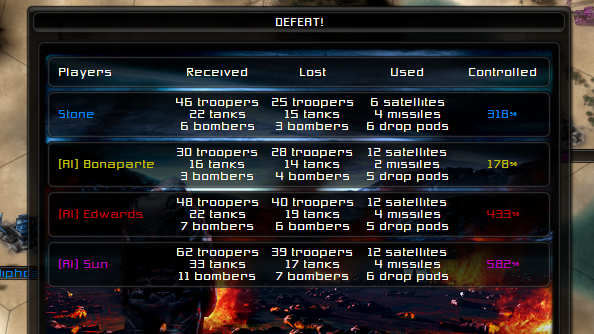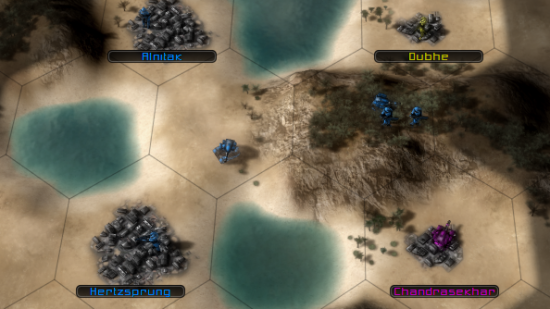Welcome
once again to PCGamesN’s Spotlight on Greenlight, our regular Saturday
feature where we look at the best and the most interesting Greenlight
games that are hoping to make their way onto Steam. We’ve already looked
at dozens of other titles, so why not check out our back catalogue?
Conquest
is a game of hexes. It’s a strategy game, a game of turns, of nudging
units, of stroking chins and/or beards, but you know what? It certainly
isn’t slow and it’s also pretty damn cool. It hits that sweet spot of
being easy to pick up, but difficult to master, and that’s why I’m
shining this week’s Spotlight on Greenlight upon it.
The
premise of Conquest is very simple. You begin with a randomly-generated
map that’s divided into those hexes and made of up of cities, mountains
lakes and plains. You’ll want to grab those cities, not only because
they’re a source of production, but also because the winner is the
player who either controls 75% of the map’s production or who has the
most total control at the end of the game.
That
end isn’t so far off, either. Conquest isn’t an experience that drags,
but instead gives you bite-sized games of just twenty turns. If that
doesn’t sound like long then, well, it isn’t,
and several times now I’ve found myself so lost in the demo that I’ve
not noticed the passage of time, only to suddenly realise that I have
just one turn left to make a final grab for all the territory that I
can. What’s more, you’re playing to a strict time limit and you only
have a few minutes to play out each turn before the game moves on.
There’s no sitting around.
It
starts like this: you’ll air-drop a small force onto the map somewhere
and find they’ve deployed themselves as tight teams of tanks and
soldiers. You’ll want to spread out and start capturing and holding
cities, which will gradually produce more units, but it won’t be long
until you spot an enemy force trying to do the same. When fights start,
they’re quick, dirty and deadly affairs with no ambiguity.
Each
unit has a fixed combat value, meaning that when they meet on the field
of battle you’ll always know which force will win. Tanks will always
beat soldiers, for example, while bombers are great at destroying tanks.
You also get combat bonuses for performing pincer movements and, should
two of the same unit meet in an even scrap, they’ll simply annihilate
one another.
This
makes combat much more about maneuvering than battles of attrition or
complex maths calculations. If you’re outnumbered, you’re probably going
to lose, but if you can assemble a powerful force in the right place at
the right time, then bam, props to you, general.
But
here’s the real kicker: Conquest features simultaneous turns. After you
issue your orders, all the units on the map move at the same time and
only fight if they end up in the same hex as one another. This means
it’s entirely possible (and not uncommon) for two armies to criss-cross
one another, swapping places on the map without actually exchanging any
fire. This very quickly has you second-guessing your opponent’s tactics.
Are they likely to sit and wait, reinforcing a hex with troops and
expecting you to stumble in with a weaker force? Or are they going to
push forward into a hex you currently hold, assuming that you’ll order
your forces to take a nearby city or climb into the mountains.
Ah,
the mountains. Not only do these make foot soldiers tougher, they also
act as hiding spots for units. You can’t see units that are sat in a
mountain hex, meaning they’re an ideal place from which an ambush can
spring forth, or a great way to mask the movement of your forces. The
fog of war sits heavy over Conquest’s map and you’re rarely aware of the
enemy’s movements until they’re very close or, in the case of those
mountains, charging down a slope straight towards you.
Every
few turns, the game will offer you a few of what it calls Operations,
special commands you can issue to support your efforts. These include
nuclear weapons, which wipe out a hex entirely, new units that can be
dropped in and, perhaps most importantly, satellites which can be
deployed to reveal enemy units in what would otherwise be obscured
hexes. You don’t get many of these Operations and they don’t arrive
frequently, but they can tip the battle in your favour.
But
suddenly it’s all over. You’ve spent twenty turns trying to choreograph
your battle ballet, trying to sneak around the back of enemy armies,
peering behind mountains with satellites or surprising your opponents by
choosing to step aside rather than face a fight. You’re a quick learner
and you’ve realised that Conquest is all about where you step and when.
Then it’s time to randomly generate another map, give your chin another rub and start all over again.
Conquest has a demo which you can download from the official site.
It’s a limited version of the full game, restricting you on the
terrains you can take to and the options you can play with but, should
you like it, you can easily unlock the full version. Of course, being
that this is our weekend Spotlight, that’s not strictly my objective. My
objective is to get you to vote for Conquest on it’s Greenlight page and help bring it to Steam, because it’s a fine strategy game that deserves to reach the wider world.
